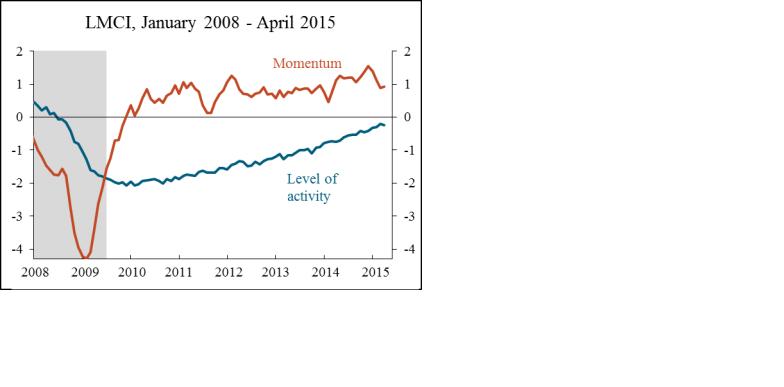Despite a recent host of weak and weaker than expected economic data the employment picture remains robust. Aside from one month of poor non-farm payrolls (NFP) data (March) the sector remains strong with positive expectations into the future. One proof of that is the rebound in NFP we saw for April. The number jumped back above 200,000 and into the range commonly agreed to represent health, if not strength, in job creation. Further evidence can be found in the Kansas City Federal Reserve’s Index of Labor Market Conditions, or LMCI.
The April reading confirms both the winter slowdown in general economic activity, the relative health of the current labor market and expectations for a continued improvement in this sector. The headline number, a measure of current activity, declined modestly in April but remains near the highest levels relative to the 5 year recovery. The index declined by only -0.037 for the month, a small concern, but when taken in light of the trailing 6 month period is not too concerning. The index is still up 0.17% for the period.
The components making the largest positive contributions to current activity are job leavers, as found in the JOLTs report. Job leavers are near multi-year highs and are an indication of confidence in the labor market; an employee is more willing to leave an old job when they are confident of finding a better one.

The momentum component of the index rose in April, gaining 0.04 to reach 0.92. This shows an increase in momentum for month driven by expectations of job availability. Of the 24 components of the index 18 were positive for April, only 6 were negative. The University of Michigan sentiment index of expected job availability made the largest contribution, followed by declining jobless claims, labor participation rates and unemployment.
What this means is that the economy is still on track. There was some slow down over the winter but it was only a dip in activity. The labor market remains strong with a confident expectation of steady improvement. This jibes with the recent housing data showing a surge in both housing starts and building permits, a trend that will increase jobs and help sustain the economy into the foreseeable future.




